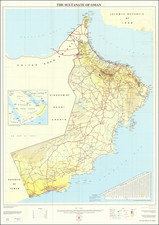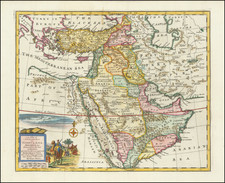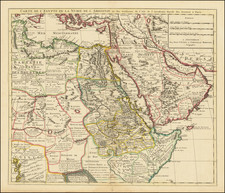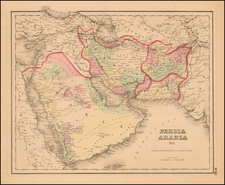The Masjid al-Haram -- Hajj Certificate
Finely crafted image of the Masjid al-Haram at Mecca with the Kaaba at its center. The image includes smaller illustrations (left to right) of the well Zamzam, Mount Arafat, Al Safa and Al Marwah, and a pilgrim ship.
The tradition of certifying the Hajj is rooted in the sacred doctrines of the Holy Qur'an and Hadith, which uphold the principle of attestation through the testimony of honest and reliable human witnesses, the Hajj certificate was an embodiment of this enduring trust. Yet, it was more than just a document; it was a symbol of societal honor and reverence bestowed upon the Hajī, the one who had successfully completed the pilgrimage to Mecca.
These certificates manifested themselves in myriad forms. Some were simple, inked documents, serving as unadorned declarations of the pilgrimage's completion. Others, however, were grand artistic expressions, providing a magnificent panorama of devotion and journey. They depicted resplendent views of the Masjid al Ḥarām and other sacred sites that the pilgrims encountered on their spiritual voyage to Mecca. These illustrations were as diverse as the pilgrims themselves, capturing the myriad hues of their faith and endurance.
Complementing the certification tradition were the radiant Hajj murals, primarily adorning the rural landscapes of Upper Egypt, but also gracing regions in Libya, Syria, Palestine, and certain Asian countries. Crafted with love and anticipation by the families and friends of the returning Hajī, these murals served as vibrant tableaus of homecoming celebration, proclaiming the transformational journey the pilgrim had undertaken.
The mural's heart typically featured an inscription positioned above the doorway, acknowledging God's grace in allowing the pilgrim to complete the Hajj. Surrounding this divine testament were further embellishments, portraying the modes of transportation used, the holy Kaaba, the Prophet's Mosque in Medina (Peace be upon him), the maḥmal - symbolic of the caravan bringing the kiswa, groups of pilgrims, water-sellers, and even elements of the natural world, like plants, trees, and birds.
The Hajj certificate and mural traditions were thus both a testament and a celebration of a profound spiritual journey. They were visual and textual affirmations of a sacred act that transformed an individual into a Hajī, signaling not only the end of an extraordinary pilgrimage but also the beginning of a renewed life of heightened spiritual status and honor.











![[Empire of Alexander The Great] Antiquor? Imperiorum Tabula in qua prae caeteris, Macendonia seu Alexandri Magni et Expeditiones exarantur . . .](https://storage.googleapis.com/raremaps/img/small/70608.jpg)
![(First state!) [Arabia and Persian Gulf] Tabula Asiae VI](https://storage.googleapis.com/raremaps/img/small/94608.jpg)

